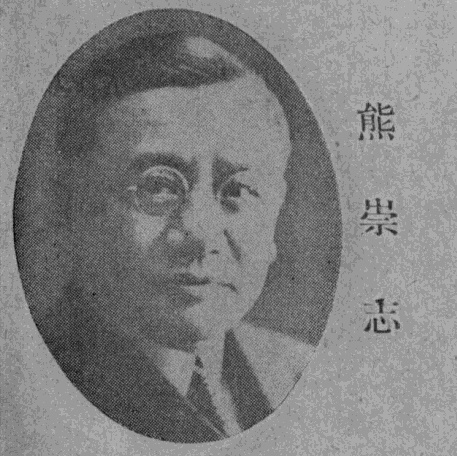
This lovely old apartment building, at 300 Eighth Avenue in Park Slope, Brooklyn, was once home to the Chinese Consul General in New York, Samuel Sung Young ( 熊崇志). A native of San Francisco, he was the son of Chinese immigrant clergyman Walter C. Young and Ah Tim Young, a Hong Kong native. After high school in San Francisco, Samuel Young graduated from the University of California, Berkeley, but soon after his graduation, he left for China. Like many young, well-educated Chinese Americans of his generation, he had very few job opportunities in the United States due to racial discrimination.

In China, Young enjoyed considerable success. Initially, he worked for the Guangzhou (Canton) Board of Education, and it was during this period that he met and married Lucy Woo, a Hong Kong resident. In 1908, Young accepted a post as president of the Tangshan Railway and Engineering College, located in the city of Tangshan east of Beijing. The 1911 revolution that ended the Qing dynasty and inaugurated the Republic of China appears to have cut short Young’s career at the college. In 1912, he moved to Tianjin, where he participated in a number of commercial enterprises related to mining and occasionally traveled to the United States. Eventually, he accepted a post as secretary in the Foreign Ministry at Beijing (his brother David Young also joined the foreign service).
Young’s career eventually took an unusual twist. In 1926, the National Revolutionary Army, which drew members from the Guomindang (the Chinese Nationalist Party), the Chinese Communist Party, and allied forces, -launched the “Northern Expedition” to unite China by defeating the warlords who controlled the central and northern parts of the country. By August 1927, the Guomindang was in control of most of the south and the lower reaches of the Yangzi River, although the Nationalists had fractured due to General Chiang Kai-shek’s bloody purge of Communists that spring. While the Guomindang forces regrouped, the canny warlord Zhang Zuolin tightened his grip on Beijing, meaning he controlled the internationally recognized government of China. And in August 1927, he appointed Samuel Sung Young to be China’s consul general in New York City. That same month, the “Southern Government” under the Nationalist regime at Nanjing appointed Frank Lee Chinglun, a New York native, to be its representative in Washington, DC.

Samuel S. Young left his wife and children behind in China when he sailed to the US. Arriving in New York, he must have lived briefly in another apartment or hotel before moving into 300 8th Avenue; press accounts date the building’s completion to 1928. By 1930, though, he was comfortably ensconced in the building in a $60 a month apartment–paid for by his new employer, the Chinese Nationalist regime that had ousted Zhang Zuolin from Beijing. The Guomindang had little money to spare for prestigious accommodations in Manhattan; the other residents of 300 8th Avenue include clerks, teachers, and minor civil servants. Except for Young, all of the other residents were white. Perhaps his status as a diplomat protected him from the housing discrimination that other nonwhite New Yorkers faced.
During his tenure as Chinese consul-general in New York, Young attempted to improve the image of Chinese Americans in the city. He also played a pivotal role in brokering a truce between New York’s two major tongs, the On Leong Tong (which Frank Lee’s father had helped found) and the Hip Sing Tong. Young probably looked back on his years in New York with fondness after the Chinese government posted him to Mexico in 1931. There, he had to grapple with the violent fallout from a major anti-Chinese movement that had deep popular and political support. Still, he stayed in the post until 1941.
After the Nationalist regime fled to Taiwan in 1949, Young and his family chose to resettle in Hong Kong. There, Young worked as the bursar of St. Paul’s Educational College until his retirement in 1954. Samuel S. Young died in Hong Kong in 1958, at age 74.
Sources for this post include The New York Times, the South China Morning Post, the National Archives, Ancestry.com, and the Christian Science Monitor.